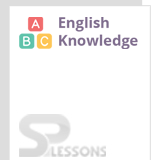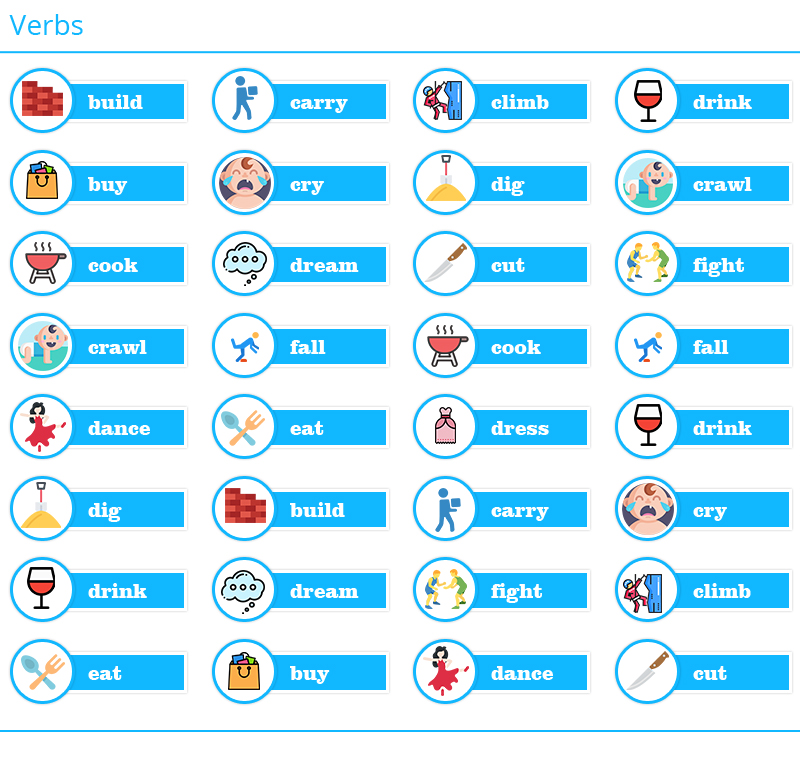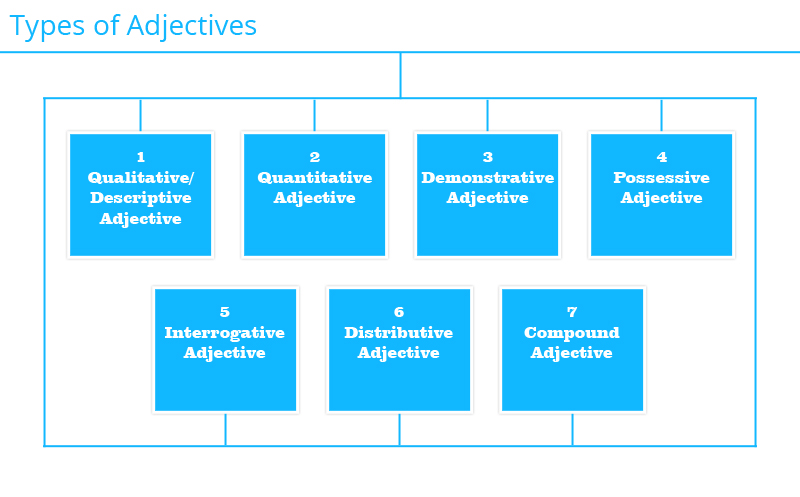 Introduction
Introduction
An Adjective is a word that clarifies a noun. Adjectives describe nouns by providing information about an object’s shape, color, size, age, origin and material etc.
 Examples
Examples
 Uses
Uses
Adjectives tell us how much or how many of something we are talking about.
What things you want passed to you and what kind of something you want.
Example:
- We need one square table.
- Here one and square are modifying table.
- I looking for a cute, high-breed cat.
- My new cat is cute and is of a high-breed.
 Types
Types
There are different types of adjectives based upon its effect on the noun and pronoun.
Descriptive adjective:
Descriptive adjectives describe the nature and attribute of nouns and pronouns. They help us to know the characteristics of noun and pronoun by answering the question. Some of the descriptive adjectives are kind, large, bulky, thin, beautiful, ugly etc.
Example of descriptive adjective:
- Rahul is a thin and handsome boy.
- They have a large house.
- I have seen a few people having tea.
- Many people have attended the party.
- Definite Numeral Adjective:
As name suggests, definite numeral adjectives clearly tells us the exact number of nouns and its order.
Examples of Definite Numerical Adjectives:
One, two, three, four, twenty etc. are known as cardinals.
First, second, third, fourth, tenth etc. are known as ordinals.
- I saw four kids playing basketball.
- He is studying in tenth standard.
- Indefinite Numeral Adjective:
Unlike, definite numeral adjectives, they do not tell us the exact numerical amount of a noun. It just gives us an idea of that amount.
Example of indefinite numeral adjective:
Some, many, few, several etc.
- Only few students were present in the class yesterday.
- Distributive Numeral Adjective:
A singular noun and a singular verb is lead by distributive numeral adjectives Sometimes there is use of a plural noun and a singular verb by using either of, every one of, neither of etc.
Examples of distributive numeral adjective:
Either, neither, each, every, another, other, etc.
- Each of hand has four fingers and one thumb.
- Neither method is correct.
- Either of the method is wrong.
- Every child deserves a good education.
- That is my bag.
- I like this dress very much.
- I like playing these games.
- Those flowers are lovely.
- Whose bag is this?
- Which is your favorite movie star?
- What is your name?
- Where are you going?
- She was a smart, beautiful, kind lady.
- She was a beautiful, kind and gentle lady.
- I have two healthy active pet dogs. (this sentence is grammatically correct)
- I have active two healthy pet dogs. (this sentence is grammatically incorrect)
- This is our class.
- It is him.
- Your dad is very nice.
 Rules
Rules
Rules of Grammar While Using Adjective:
Following rules of ordering adjectives helps us to be able to order adjectives in a meaningful sequence. Learning these rules of ordering objectives plays an important role in order to use number of different adjectives while drafting a sentence. It helps us to understand that which adjective to be write first and which one should be used in last. Usually we make sentence by adding only one adjective into the sentence but if you want more information about the noun and pronoun, you can add more than one adjectives into the sentence in proper order by following rules of ordering adjectives. Below we are going to discuss the rules of ordering the objectives.
Determiners:
Adjectives like article, possessive, demonstrative, numerical, quantifier, and distributive adjectives should be placed first in a sentence.
Example:
- I have two good. (the sentence is making sense and is grammatically correct.)
- I have good two. (the sentence is making no sense and it is grammatically incorrect.)
- I have two good pet dogs. (Here good is quality or opinion adjective which follows after the numerical adjective.)
- I have two good little pet dogs. ( here, little is the adjective describing the size of noun.)
- I have two good little kids. Or
- I have two good little dogs. They are one and four. Or
- I have two good little school-going kids.
- I have two wooden new square tables. (The sentence is bit long, so we can put some attributes of noun in a separate sentence.
- I have two wooden new square blue tables. (The sentence is bit long, so we can write creatively and put some attributes of noun in a separate sentence.
- I have two wooden new square blue tables. Both are new, square and blue in color.
- I have two wooden new square blue Italian tables. (Here the sentence describes the heritage and manufacturing place of the item.)
- I have two wooden new square blue tables from the South. (Here the sentence is bit unclear; it is just showing the place of purchase.)
- I have one soft small rubber.
- I have two sweet small energetic puppies.
- She has a small blue wooden pet house. (Here, pet is a grammatical modifier as it modifies the noun house. Grammatical modifier here telling us clearly that the house belongs to the pet, not to the human.)
 Errors
Errors
Common Errors While Using Adjectives
Here we are going to discuss some of the mistakes that we often make while using adjectives.
- Incorrect: He is more healthier than his brother.
- Correct: He is healthier than his brother.
- Incorrect: Dalhousie is further from Rajasthan than Chandigarh.
- Correct: Dalhousie is farther from Rajasthan than Chandigarh.
- Incorrect: You have much dresses.
- Correct: You have many dresses.
- Incorrect: She has many things to do.
- Correct: She has much things to do.
- Incorrect: She is becoming fat and fat every day.
- Correct: She is becoming fatter and fatter every day.
- Incorrect: Let us do nice something.
- Correct: Let us do something nice.
- Incorrect: I can’t afford that a luxurious car.
- Correct: I can’t afford that luxurious a car.
- Incorrect: let me see the last movie.
- Correct: Let me see the latest movies.
- Incorrect: I have less pencils than you.
- Correct: I have fewer pencils than you.
- Incorrect: She wasted her all time.
- Correct: She wasted all her time.







